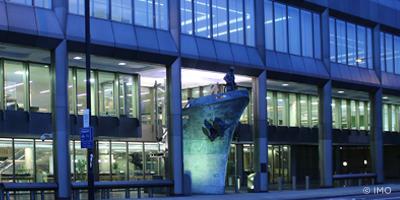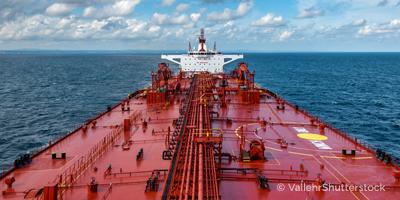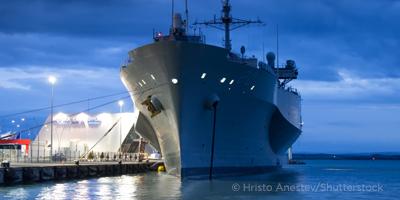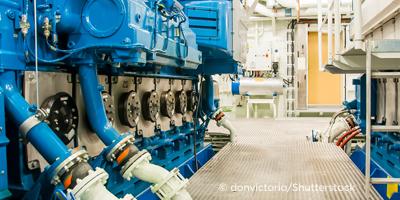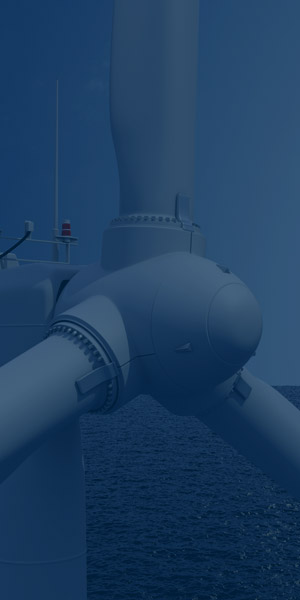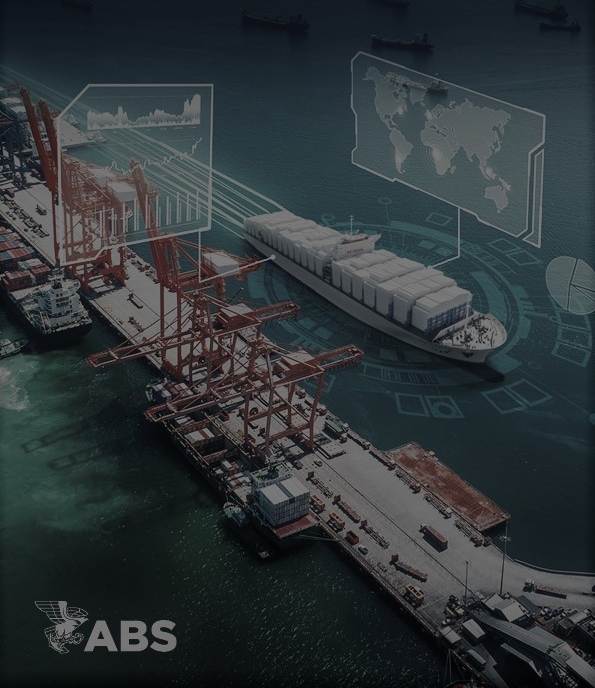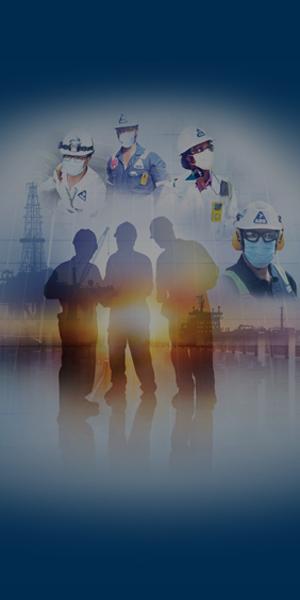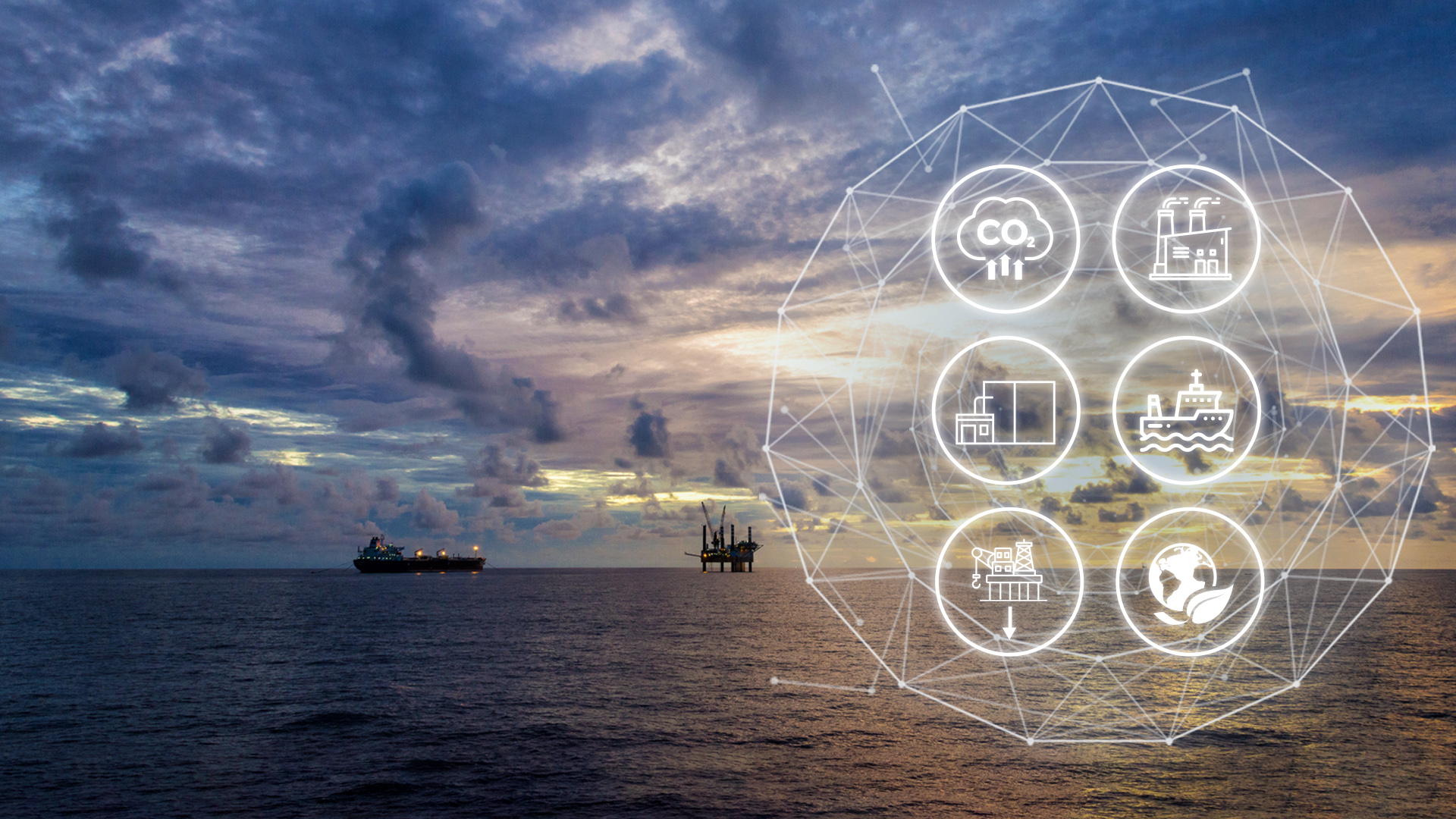Quick Links
- CCUS Overview
- Capture
- Transportation
- Utilization and Storage
- Value Chain
- ABS Support
Why CCUS?
Climate change has taken center stage globally particularly after the 2015 Paris Agreement. The maritime industry while contributing only to 3% of the global GHG footprint is an enabler of the energy intensive economy and is at the forefront of the global sector specific decarbonization drive. The maritime industry with the need for development of an alternative fuels supply chain and on-board carbon capture for point source carbon emission reduction, looks at carbon capture as one of the foremost technologies currently available in the pathway to decarbonization. Requirements are constantly emerging from regulatory bodies, financial institutions as well as several other organizations, driving companies to not only account for their carbon footprint but to also find ways to reduce it. One of the methods that many companies are exploring is carbon capture, utilization and storage.
How does CCUS work?
CCUS is the process by which CO2 can be captured, cleaned, dehydrated, liquefied, transported and either utilized or stored at a final location.
- Capture – Carbon capture technologies capture, absorb, or sequester CO2 through pre-combustion capture, oxy-fuel capture, or post-combustion capture.
- Transport – Once the CO2 is conditioned, it can be transported through pipelines, ships (CO2 carriers), motor carriers and railways to storage facilities or directly be utilized.
- Utilization – CO2 is currently being re-used as a key input in fertilizer, brewing, and food industries. However, there is ongoing research to support CO2 injection into wells to enhance oil recovery and for utilization in methanol production. Additionally, numerous industries including the chemicals production, fuel production, construction materials, forestry, bioenergy using carbon capture (BECCS) will require the enabling infrastructure that the shipping industry provides.
- Storage – Instead of utilization, CO2 can be permanently stored through injection into wells, such as depleted oil or gas reservoirs, coal beds, or saline aquifers, or stored through mineral carbonation which creates a solid carbonate form. Permanent sequestration in offshore depleted wells and sedimentary basins will require the shipping industry’s carrying capacity.
Carbon capture will be a critical factor in progressing toward global decarbonization. As established in numerous studies, some of the most promising alternative fuels would require carbon capture to achieve low-carbon status; for example, manufacturing blue hydrogen through a process of steam methane reforming with carbon capture. Additionally, hydrogen-based fuels such as Ammonia and Methanol will require carbon capture.
To meet the needs of the global energy transition, according to the Intergovernmental Panel on Climate Change (IPCC) and the IEA, the annual global capacity for carbon capture will need to increase multifold from 50 million metric tons of carbon dioxide (Mt CO2) in 2020 to 800 Mt CO2 per year by 2030 and more than 5,000 Mt CO2 by 2050 [4]. This represents a 16-fold increase by 2030 and a 100-fold increase by 2050 in carbon capture capacity. With low carbon fuels being the path of least resistance and because industrial heat is difficult to electrify, fuel transformation should be the fastest adopter of CCUS.
Types of Carbon Capture
The capture of CO2 can occur pre-combustion (syngas), post-combustion (end-of-pipe solutions), and by using oxyfuels. The captured CO2 is then compressed into a liquid state and transported by pipeline, ship, or truck.
- Post-combustion method captures the CO2 after the fuel is combusted and produces a product that will require additional drying, purification and compression before transportation. This is the most mature technology, but the low partial pressure of the CO2 in the flue gas is a big downside.
- Pre-combustion capture involves transforming the fuel into an intermediate non-carbonaceous form called syngas, which is mostly composed of H2 and CO2. The CO2 is captured before being combusted and the H2 is the fuel which when combusted only releases water vapor.
- Oxy-combustion is when the burners are modified to burn fuel in pure oxygen, instead of air leading to a pure CO2 stream (the nitrogen oxides are prevented and there is no need for CO2/N2 separation) and increased energy efficiency. The downsides are the need for large amounts of O2 and high combustion chamber temperatures.
Shipboard/Onboard Carbon Capture Application
To reach the IMO’s 2030 and 2050 emissions reduction targets, shipboard carbon capture is currently being explored as an end-of-pipe solution to reduce vessel emissions, CCUS is still in its infancy as present land-based CCUS equipment cannot be used on ships because of energy usage, on board storage, and energy usage related challenges.
Several pilot projects are emerging focused on the feasibility of carbon capture on board ships with some proposing modifying existing onboard systems like scrubbers and other new CO2 separation technologies.
In any case, integrating a CCUS system on board would involve additional capital and operational costs from retrofitting and there would need to be a clear value chain established for captured carbon for it to be economically viable.
To learn more about how ABS can assist you in practically planning for onboard carbon capture and storage, explore our services below or connect with our sustainability team.
Once you capture the CO2, it needs to be purified and then conditioned in a dehydration and liquefaction system before transporting. That is because impurities from other substances, like water or sulfur compounds, could have impacts on the materials used to contain the CO2.
The two main ways of transporting CO2 are pipelines and ships. Pipelines may be more favorable when transporting CO2 over shorter distances, whereas ships are more economical when transporting distances over 1,000 km.
Current vessel projects specific to CO2 transportation are regional and involve transporting from the point source to a depleted well for sequestration. Present LCO2 carriers are built to meet regional transportation demands.
LCO2 Carriers
Currently there are only a few pure LCO2 carriers in the world, with over 100 gas carriers capable of carrying CO2. Because CO2 is carried at around-54.4 Celsius and 5.-7 bar pressure in a liquid state, one of the challenges associated with CO2 is that it can rapidly move from the liquid state to the solid state when there is a drop in pressure. This can lead to the formation of dry ice, causing technical and safety challenges.
Another challenge associated with LCO2 carriers is that the design must be flexible enough to operate in multiple fields. Because CO2 coming from point sources is rarely pure, it may contain impurities such as H2O, O2, hydrogen sulfide (H2S), H2 (hydrogen), and SO2 that can negatively impact the storage and transportation conditions. Additionally, reliquification specifications are dependent on the CO2 composition being effectively customized for a narrow range of impurities. However, the more flexible the system, the more complicated and expensive it becomes. That is why regional use is the more practical option presently.
Finally, because CO2 is carried in cryogenic pressurized tanks there is a technoeconomic limit to how large they can be before the c-type trilobed tanks become too heavy and too expensive.
Although, these challenges may seem difficult to overcome, we can assist you in navigating them through our team of sustainability experts skilled in naval architecture and advanced sustainability technologies. View our latest projects in the news section below.
CO2 is utilized in a variety of industries, including in the process of enhanced oil recovery and in the production of foods and beverages. Additionally, CO2 will be a key enabler in energy chains of the future as you can synthesize methanol fuel from captured CO2, oxygen and hydrogen and then capture the CO2 from burning the methanol.
Currently based on the market conditions, CO2 utilization occupies a small portion of the overall CO2 volumes expected to be captured, making storage an invaluable step . There are a few options available for permanent storage, including using it during Enhanced Oil Recovery, where the CO2 is permanently stored following the recovery of oil from the reservoir.
This same process can be replicated by injecting supercritical CO2 into depleted oil and gas reservoirs, saline aquifers, and other geologic formations. These have existed for millions of years and already have containment caps, faults, and permeability features that are suitable for storing liquids.
One challenge that this process faces is that the CO2 stream needs to have consistent properties and monitoring will be required to account for carbon, ensuring there aren’t issues with leakage.
The ability to capture carbon and ultimately produce blue fuels (hydrogen, ammonia, methanol) and transport green fuels (hydrogen and ammonia) will be one of the key pillars of the energy transition. Requiring the entire carbon value chain, from capture to utilization and storage to scale up exponentially over the course of the next decade.
ABS understands that this is a goal that cannot be achieved alone, but one that will require a collaborative approach on all fronts. We can support all aspects of the carbon value chain, connect with our team today or explore our list of solutions below.
ABS provides support and guidance to owners, operators, shipbuilders, designers, and original equipment manufacturers as they consider practical implications and risk assessments of onboard carbon capture and applications that require the shipping industry to act as the enabler for e.g., scaling up of alternative fuels, aid in its distribution and permanent geological sequestration offshore.
Services offered include:
- Marine vessel design and construction support for classing vessels and offshore facilities
- Techno-economic analyses
- Transportation project feasibility assessment
- Certification based on public ISO standards
- Novel Concept Qualification
- Qualifying new carbon capture technology
- Risk assessment and hazard review
- Vessel/fleet benchmarking and identification of improvement options
- Energy Efficiency Design Index (EEDI) and Energy Efficiency Existing Ship Index (EEXI) verification and identification of improvement options
- Carbon Dioxide Removal (CDR) Accounting and Certification
- Optimum voyage planning
- Contingency arrangement planning and investigations
- Maritime decarbonization strategy development and implementation
- Onboard CCUS process design, evaluation, and optimization
- Al-driven emission forecasting and verification





